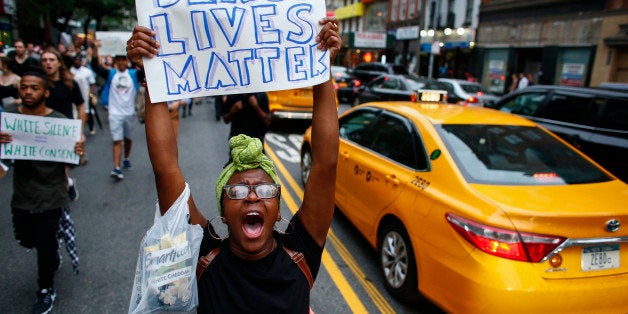
Philando Castile's mother said this week -- trying to explain the incomprehensible and needless death of her innocent son shot by a white police officer in Minnesota during a traffic stop -- that he was "just black in the wrong place." One could say the same of Alton Sterling, shot dead after being subdued on the ground in Louisiana; teenager Laquan McDonald pumped full of bullets walking in the road in Chicago; and Tamar Rice, the child waving a toy gun in Cleveland.
While there are a couple of hundred black (and brown) persons shot by police each year, there are millions who have been on the receiving end of disrespectful and unlawful police misconduct that did not result in death, or even bodily injury, but which scars the soul and spirit. Being stopped and frisked on the street, or stopped for "driving while black" and told to "put your hands where I can see them" -- these are things that virtually never happen to white folks. The fear and suspicion that police officers have, consciously and unconsciously, toward Americans of color is a corrosive cancer that must be rooted out if we are to heal the wounds and divisions that this week's events have underscored again.
The urgency of doing so was brought home with a vengeance by the killing of five Dallas police officers, and the wounding of six others, by a likely mentally-troubled black man, a veteran of Afghanistan, solely because they were dressed in blue. It didn't matter that they were protecting those protesting the police killing of innocents of color. He reportedly was just angry at the disregard of black lives and the disrespect for black dignity which smartphone cameras are so often revealing in so many police officers these days.
Micah Johnson's violence must be condemned in the strongest of terms. The omnipresence of automatic and semi-automatic rifles and handguns rival that of smartphone cameras these days, and there are almost 1.4 million Americans currently serving and more than 20 million who have served in the military, who have been trained to use them there, as well as millions more Americans who are not veterans but who have these weapons at their beck and call. The leaders of the Black Lives Matter movement know that Dallas threatens to turn Americans away from their cause and are properly distancing their movement from it.
But there are millions of Americans of color who have been the victims of nasty interactions with police just because of the color of their skin, and who feel that but for the grace of God they or their loved ones could have died for being "black in the wrong place." As a civil rights lawyer who has brought police misconduct cases on behalf of people of color for more than 30 years, I know the hurt, fear and anger that each such interaction can bring, often with long-lasting traumatic memories. I know the corrosive anxiety which parents of color routinely feel over the possibility that police officers with racial bias -- conscious or unconscious -- will confront their children, with disastrous results.
Better police training, while absolutely necessary, will not stop the disrespect and the police misconduct which comes from it. The fundamental problem today is what it was 30 years ago: the policing culture and the Blue Wall of Silence that still prevents any police officer from stopping and reporting the misconduct of his or her brother officers. It was telling that, when the New York Times interviewed police officers last Friday, not one would comment on the Castile or Sterling videos or criticize the officers who killed them. It was fine for Dallas Police Chief David Brown, himself an African American, to say, "All I know is that this must stop, this divisiveness between our police and our citizens." But that cannot happen until he and other top police and municipal officials and prosecutors around the country break down this Blue Wall. They not only have to prosecute the misconduct that is revealed on these videos and others like them, but they have to prosecute and hold accountable any other police officers who stand by and then help cover that misconduct up with police perjury and falsification of official records which has always been as common as cameras are ubiquitous these days.
America is divided and hurting, and police-community relations is one big part of that hurt. But there will be no healing between black and blue, no unity, without justice. The cameras are not going away. If the Blue Wall of Silence remains standing, if police officers and commanders circle the wagons rather than change their culture, violence by and against the police will only worsen. And that is a truly frightening prospect.